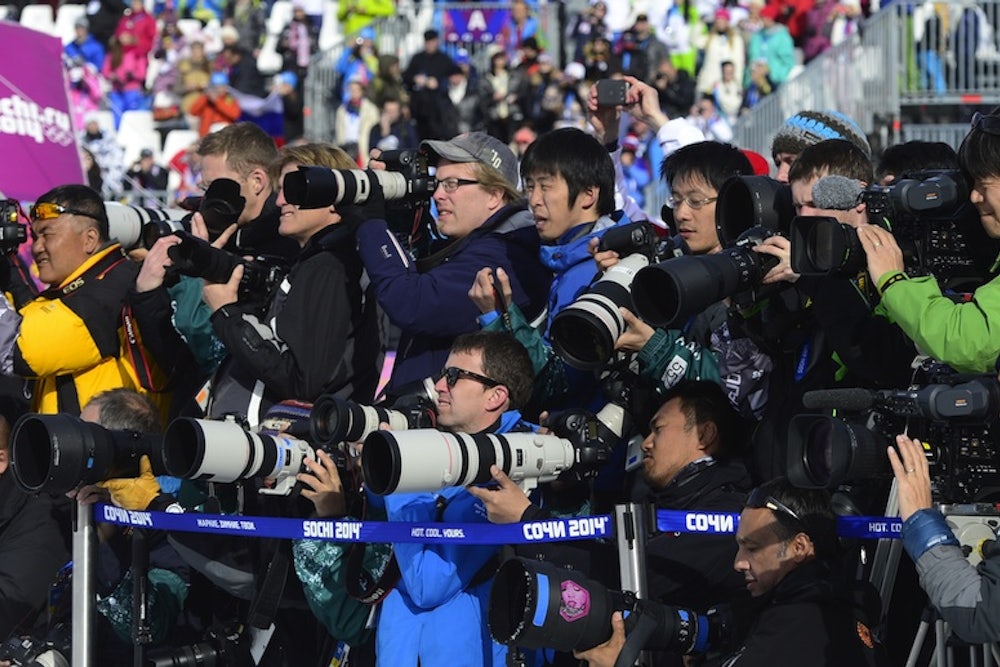As has been extensively reported, Putin is basically willing to do anything to ensure that the Winter Olympics appear to go off without a hitch. Yesterday, that meant making Pussy Riot disappear from Sochi as soon as they had arrived, an ill-advised containment strategy, given the backlash. More generally, it has meant spending billions of dollars in payoffs and building the biggest security apparatus in Olympic history.
The Kremlin has plenty of experience controlling media messages more broadly. As two new reports have highlighted, Russia has managed to clamp down on independent media not just in Russia, but also in the former Soviet states. “The majority of news outlets, particularly those controlled directly by the state, prefer to cover Sochi the way they would cover a deceased man: in a positive light or not at all,” a report from the Committee to Protect Journalists explains. Another recent report, issued by Center for International Media Assistance and authored by journalist David Satter (whom the Kremlin expelled from Russia five days after the report was published), meticulously documents the extent to which Putin has successfully disseminated pro-Russia propaganda in the former Soviet sphere. “The media strategy of Russia in all of the former Soviet republics is basically the same: to promote Russia’s foreign policy objectives and discourage democratic developments in the former Soviet republics," Satter writes. Russia has a vested interest in controlling the media in those countries; democratic development, Satter writes, "would serve as an example of the benefits of democracy to the people in Russia." It isn't hard for Russia to enforce this, according to Satter. “Russian owners of media outlets in the former republics are generally well aware of the coverage that is expected from them.”
Here are some of the ways in which the Kremlin has influenced the media in former Soviet states, and some of the consequences that Satter points out:
- Three major television networks dominate Belarus, and all three are Russian state channels. This has led to a majority of the population having a negative view of the protests in Ukraine. As Belarusian politician Sergey Kalyakin put it, Russian state media reports have emphasized that “all sorts of nationalists and criminals are taking part in the protests."
“In Kyrgyzstan, the Russian channels are treated as national channels,” Satter writes. These channels have portrayed the U.S. base in Kyrgyzstan as an American attempt to undermine Russia-Kyrgyzstan relations.
In Kazakhstan, most media outlets rely on Russian journalists for material and don’t bother to hire their own staffers. (The president of Kazakstan recently promoted a shift from the Cyrillic to the Latin alphabet, possibly to contain Russian influence.)
This summer, after Lithuanian news site Delfi.lt ran an article alleging Russian officials had rigged a Eurovision contest, the site received threats from Russia and was hit with a cyberattack that took it temporarily offline.
To be sure, there are robust independent media outlets in these countries, but they must compete with Russia-sponsored news organizations for their audience. With Russia holding the 148th spot on the 2014 World Press Freedom Index, that’s not a factor that inspires much confidence.
